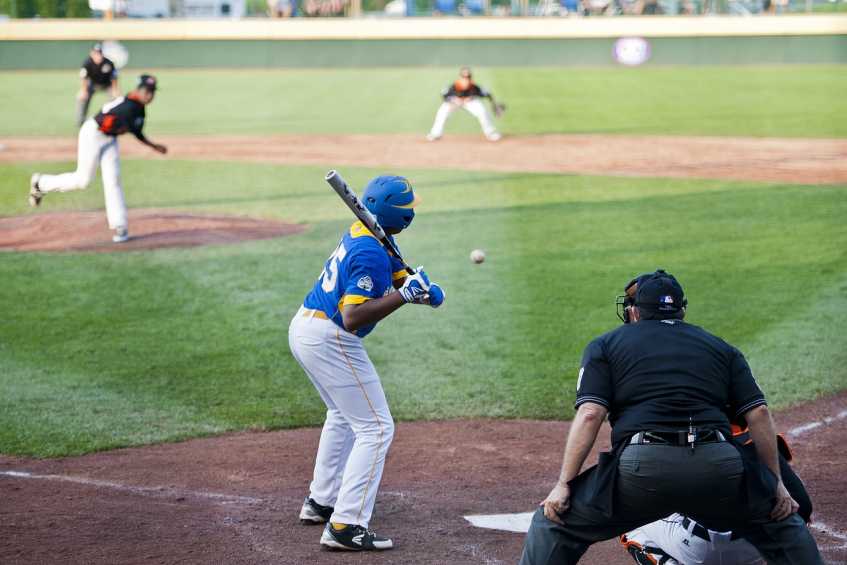
A sinker pitch is a type of pitch that is thrown with the intention of making the ball move downward as it approaches the plate. It is known for its ability to induce ground balls and double plays, making it an important weapon for pitchers at all levels of the game.
Learning how to throw a sinker is crucial for any pitcher looking to improve their effectiveness on the mound. By mastering this pitch, a pitcher can keep hitters off balance and induce weak contact, making it easier to get outs and keep runs off the board.
The sinker pitch has been a part of baseball for over a century, with some of the game's greatest pitchers utilizing it as a key part of their repertoire. In this section, we will explore the history of the sinker pitch and how it has evolved over time.
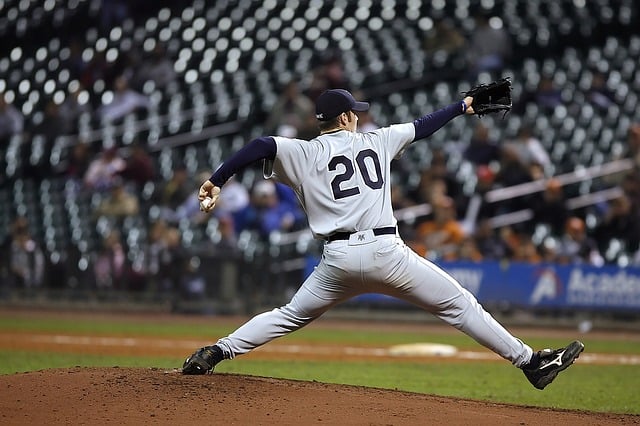
A sinker pitch is a type of fastball that has a natural downward movement due to its grip and release. It is also known as a two-seam fastball, as it is thrown with two fingers along the seams of the ball.
Beneath the surface, there are some significant differences between a sinker and other fastball pitches, such as a four-seam fastball. For instance, a sinker has a lower velocity than a four-seam fastball, but it makes up for it with increased movement. Additionally, the sinker is often thrown with a different grip than the four-seamer, which results in a unique release point and less spin rate.
Compared to breaking balls like curveballs or sliders, the sinker is a pitch that doesn't break as sharply. Instead, it moves in a more subtle but consistent way, which can make it difficult for batters to hit. The pitch's trajectory can also change depending on the pitcher's arm angle, which can make it even harder for batters to predict where the ball will end up.
When thrown correctly, the sinker pitch moves downward and towards the throwing arm side of the pitcher's hand, making it especially effective against batters of the opposite handedness. The pitch's movement is caused by the ball's backspin and the way it interacts with the air as it travels towards home plate.
The sinking action of the pitch is what makes it so desirable for pitchers to master. When a sinker is thrown correctly, it can induce weak ground balls, pop-ups, or even strikeouts. This can lead to a higher number of outs and lower pitch counts, which can ultimately save a pitcher's arm and benefit their team.
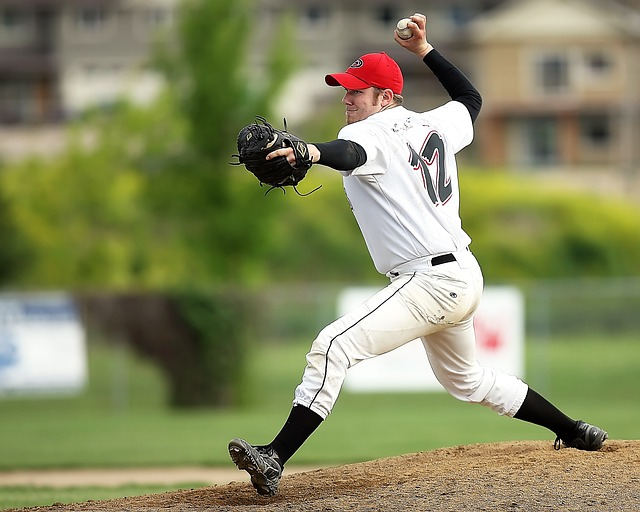
The grip for a sinker pitch is a crucial aspect of throwing this pitch effectively. A pitcher must have a firm grip on the ball and hold it towards the bottom with the fingers. The thumb should be placed underneath the ball while the first index finger and middle fingers should be on the top of the ball with the middle finger resting on the seam. The grip for a sinker is similar to that of a two-seam fastball, but the fingers are spread slightly wider apart.
To throw a sinker pitch effectively, proper throwing mechanics must be employed. The pitcher should start with a windup or stretch, depending on their preference, and move their arm back while keeping their elbow at a level that is slightly below their shoulder. As the pitcher strides forward with their front foot, they should bring their arm forward and release the ball with a slight downward motion. The release of the ball should be similar to that of a fastball, but the motion should be more downward and towards the front of the plate.
One common mistake when throwing a sinker pitch is releasing the ball too early or too late, which can cause the pitch to lose its downward movement and become ineffective. Another mistake is failing to keep the fingers spread apart during the grip, which can cause the pitch to turn into a fastball or lose its sink. Over-rotating the wrist can also cause the pitch to lose its sink and become a flat, hittable pitch. It's essential to practice the mechanics and grip of a sinker pitch consistently to avoid making these mistakes.
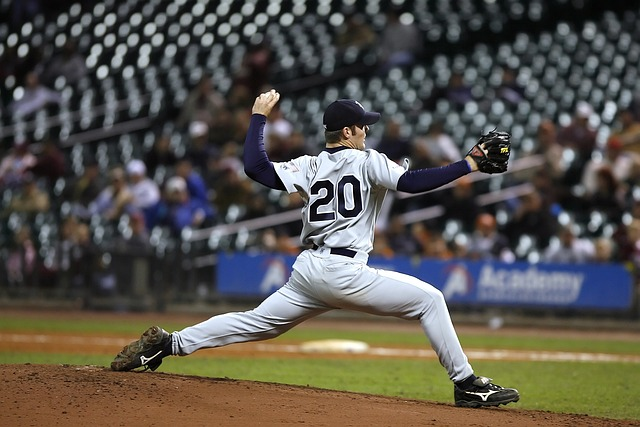
A sinker pitch is a versatile and effective weapon in a pitcher's arsenal, and there are several variations of this pitch that can be used to deceive batters. In this section, we will explore the different types of sinker pitches and how they can be thrown effectively.
The two-seam sinker is the most common variation of the sinker pitch. It is typically thrown with a grip that involves placing the index and middle fingers along the seams of the ball. This grip causes the ball to rotate along its axis, which gives it more lateral movement and a slight movement in the direction of the pitcher's throwing hand. The two-seam sinker is known for its ability to induce ground balls, making it a favorite among pitchers who rely on ground-ball outs.
The four-seam sinker, on the other hand, is a less common variation of the sinker pitch. It is thrown with a grip similar to that of a four-seam fastball, with the fingers placed across the seams of the ball. This grip allows the pitcher to throw the ball with more velocity and less movement than the two-seam sinker. However, the four-seam sinker is also less effective at inducing ground balls.
A sinking fastball is a variation of the fastball that has downward movement. It is often thrown with a grip similar to that of a two-seam sinker, with the fingers placed along the seams of the ball. The key to throwing a sinking fastball is to impart a slight spin on the ball, which causes it to drop as it approaches the plate. This pitch can be effective in inducing ground balls and weak contact, making it a valuable tool for pitchers.
There are several off-speed pitches that can be paired with a sinker to keep batters off balance. One common combination is the sinker-slider, in which the pitcher throws a sinker followed by a slider. The sinker sets up the slider by inducing the batter to swing early, while the slider breaks away from the batter's swing path. Another effective combination is the sinker-changeup, in which the pitcher throws a sinker followed by a changeup. The sinker sets up the changeup by inducing the batter to expect a sinking fastball, while the changeup drops off the table, causing the batter to swing and miss.
Overall, the variations of the sinker pitch give pitchers a wide range of options to keep batters off balance and induce weak contact. By mastering these different types of sinkers and their associated off-speed pitches, pitchers can become more effective on the mound and help their teams win games.
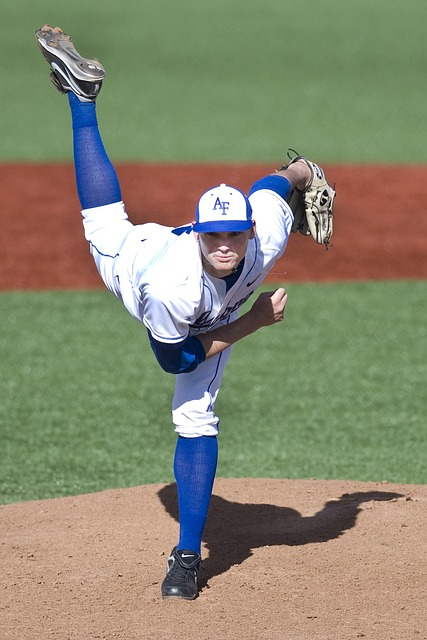
Adding a sinker pitch to a pitcher's repertoire can provide several advantages. First, it can increase the number of pitch options a pitcher has, giving them more versatility on the mound. This can make it harder for batters to anticipate what type of pitch is coming, making it easier for the pitcher to get strikeouts and ground ball outs. Additionally, a sinker can be an effective tool for inducing double plays, as it has the potential to generate more ground balls.
Sinker pitches can be challenging for batters to hit due to their movement and velocity. The sinking motion of the ball can cause batters to swing over the top of the ball, resulting in ground balls and strikeouts. Additionally, because sinkers are typically thrown with a high degree of velocity, batters have less time to react to the pitch.
The sinker pitch's downward movement can result in more ground balls and fewer fly balls, which can be advantageous for pitchers. Ground balls are generally less likely to result in extra-base hits or home runs than fly balls, and they can also lead to double plays. Additionally, fly balls have a higher likelihood of being caught by outfielders, so inducing ground balls with a sinker can be an effective way to limit a batter's offensive potential.

Like any pitch, a sinker pitch can be hard on the arm if not thrown correctly. However, when thrown with proper mechanics and technique, a sinker pitch can actually put less stress on the arm than other pitches, such as a four-seam fastball or a slider. It's important for pitchers to listen to their bodies and practice good arm care to prevent injury.
A sinker pitch can be used to trick batters in a few different ways. One is to use it as a changeup pitch, throwing it after a series of faster pitches to throw off the batter's timing. Another is to use it as a pitch that looks like it's coming in for a strike but then drops suddenly, causing the batter to swing over it. Additionally, a sinker can be used to induce ground balls and double plays, which can be advantageous for getting out of tough situations.
Overviews. The sinker and 2-seams have been categorized as “fastballs” due to their similar speed to 4-seamers. However, they differ because two seamers because of their extra spin sideways compared with four seams.
Sinkers are fastballs with downward-sloping, vertical movement only. The ball can be released at a similar speed for fastballs with four seams but is usually a little faster with 2-3%. Sinker is a good way for a baseball player to hit the first half of a pitch thereby producing lots of easy-to-hit ground balls.
Sinking balls are therefore hard to hit at their perfect spots than fastballs and curves. Hitting the sinker sometimes leads to an accident in the wrong place. The vibration felt in the hands makes the balls feel heavier.
The sinker drops 6 – 9 inches more than a typical 4-seam fastball causing more lateral movement and the player to hit more groundballs than any other fastball. Similarly, horizontal motion occurs when a sinker is thrown.
The mechanics of throwing The best way to throw the sinkers is to grab the ball at two seams to throw at the same speed. Some pitchers use their thumbs downward to throw them. The pitcher's hands turn to the right after release.

As with any baseball pitch though, following through is everything. While there might seem to be a lot to remember when practicing this pitch, it can be broken down into a few simple, fluid motions. Everything about your pitch, from windup to release, should be smooth and not feel disconnected at any point. Once you've released the pitch, position yourself as if the batter will make contact with the ball. While it is preferred to strike the batter out, you should always be prepared to field the ball immediately.
You'll want to use this deceptive pitch when your batter isn't expecting it. It's a good idea to get to know the opposing team and pay close attention to what the batter likes to hit. A sinking fastball is an excellent choice if the batter typically makes contact with a high pitch. This pitch is an excellent addition for an experienced pitcher who has solidified all the foundations and basic pitches. Now it's time for you to get out there and practice these steps! With this step-by-step tutorial, you'll know how to throw a sinker in practically no time. Then you can start adding in new harder pitches like a knuckleball or changeup!
In conclusion, sinker pitches are a valuable tool for any pitcher to have in their arsenal. They offer a variety of benefits, such as difficulty for batters to hit and the potential for more ground balls.
Understanding the grip and mechanics of throwing a sinker pitch is essential, as well as avoiding common mistakes. Additionally, variations of the sinker pitch, such as the two-seam, two seamer, and four-seam sinker, as well as the sinking fastball, can add versatility to a pitcher's repertoire.
It's important to note that while sinker pitches can be an effective weapon, they may not be suitable for every pitcher or situation. It's always best to work with a coach or mentor to determine what pitches work best for an individual player.
Overall, sinker pitches are worth considering for any pitcher looking to improve their game. With practice and dedication, it's possible to develop a quality sinker pitch and take advantage of the benefits it can offer on the field. So go ahead and give it a try - you might just surprise yourself and your opponents!
Chris Sloan is a former baseball league commissioner and travel baseball coach who has made significant contributions to the sport. In 2018, he founded selectbaseballteams.com, a website that helps parents find youth and travel baseball teams in their local areas. Since its launch, the website has experienced impressive growth, offering a wealth of resources including teams, news, tournaments, and organizations. Chris's unwavering passion for baseball and his innovative approach to connecting parents with quality baseball programs have earned him a respected reputation in the baseball community, solidifying his legacy as a leading figure in the world of youth and travel baseball.
There are 0 comments on "How To Throw A Sinker Pitch in Baseball"
chandler allen says:
"Hi my name is chandler, i’ve enjoyed..."
On Wanting to tryout for summer ball. as an 18 year old
david graham says:
"With no current MLB team in Canada,..."
On With no current MLB team in
Charles Chavez says:
"To All Coaches: Do you have13U or..."
On Looking for Games